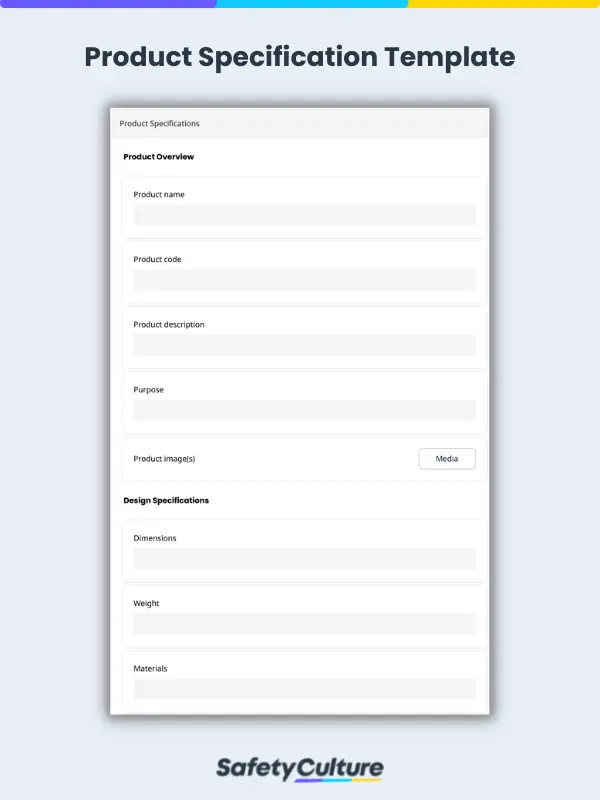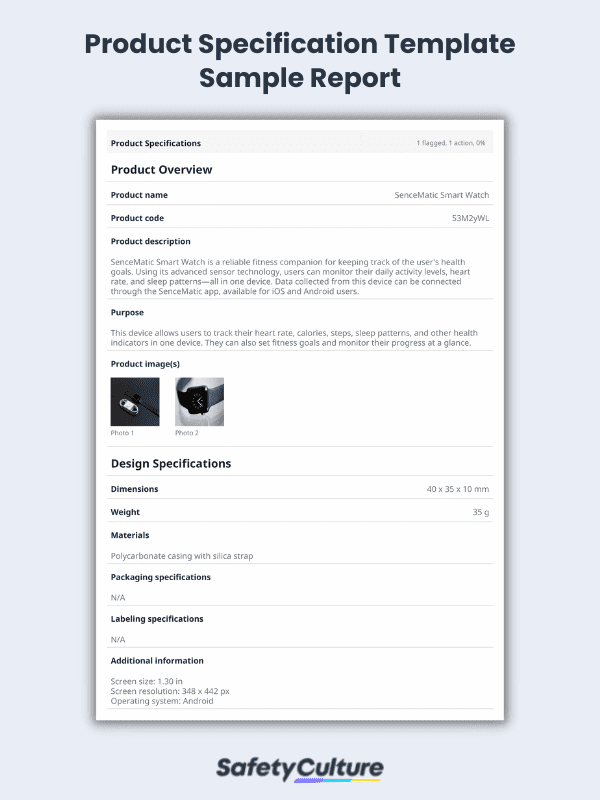What is a Product Specification Template?
A product specification template is a document that outlines information about the product, such as its purpose, design, and performance. It serves as a blueprint for products in the pipeline to ensure that they are designed and built to the highest standards to satisfy customer needs and expectations within the set budget and timeline.
Benefits
A product specification template proves to be a beneficial tool for businesses for many reasons. For one, it informs all relevant parties about the product’s features, requirements, and specifications. With a clear and concise document containing all essential product information, everyone can be sure they are working toward the same goal.
This template is also essential for streamlining the product development process, as it serves as a reference document which everyone can access and verify information from. Having a single source of truth helps reduce the amount of time spent on back-and-forth communication among the teams involved. This way, they can speed up the process and ensure that the product is released on time.
Lastly, a product specification template allows product development teams to create products that meet customer needs and expectations. This, in turn, results in happy and loyal customers.
What to Include in a Product Specification Template
The format and content of product specification templates may vary depending on the product and industry in which they are used. But at their most basic form, here are the essential things to include in the template:
- Product Overview – Start with the basic details of the product, such as its name, code, description, and purpose. Make sure to attach product images as a visual reference.
- Design Specifications – Describe the product’s physical appearance, such as its dimensions, weight, and materials. This section also includes packaging and labeling specifications for specific products.
- Performance Tests – Document all tests performed on the product, along with the quality benchmarks and results.
- Issues or Defects – Mention any known or potential problems for the product and assign corrective action to resolve them.
- Compliance Standards – Specify the laws and regulations that govern the products you’re developing. You can also note any quality, safety, or other certifications required for the product.
Apart from these basic requirements, you can tailor your product specifications to your specific needs. For example, food product specifications typically include nutritional and allergen information, whereas software product specifications incorporate user roles and integrations in the document.
Product Specification Example
Product specifications don’t need to be lengthy or complex. It’s best to be succinct when creating product specifications. Here’s an example of a filled-out product specifications template that you can adapt and use immediately:
What happens if you don’t use a product specification template?
While not a requirement, product specification templates are extremely helpful for simplifying the writing process. Without this tool, you may encounter problems with:
- Verifying that all information provided in the product specification is complete.
- Aligning stakeholder expectations about the product’s functionality, design, and other specifications.
- Keeping track of who made what changes and when they were made




